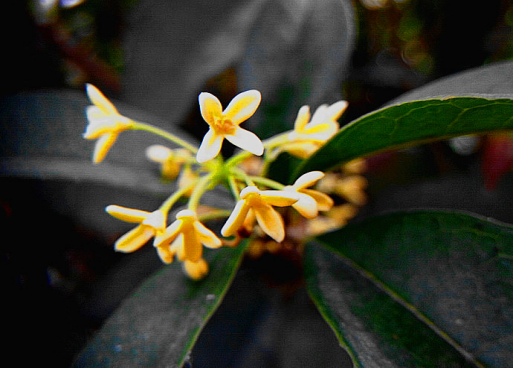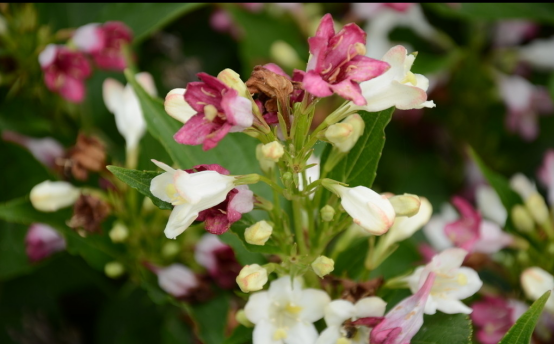Inducement-- the reason for the loss of leaves of ginseng banyan
1. Normal phenomenon:
If it is a newly bought ginseng banyan leaves, there is no need to worry too much, because this is the ginseng banyan to adapt to the new environment, is a normal phenomenon, let it slowly slow down the seedlings.
two。 Growth habits:
Ginseng banyan is native to the tropical rain forest with high temperature, rainy and humid climate, where the temperature difference between day and night is small. When the temperature difference between day and night is more than 10 degrees, ginseng banyan will lose its leaves easily and even die in the end.
3. One of the improper maintenance:
When the ginseng banyan soil is not dry or when the ginseng banyan is not watered thoroughly, it will accumulate water, resulting in rotting roots and falling leaves.
4. Improper maintenance part II:
When fertilizing ginseng banyan too much, the concentration is too high, resulting in fertilizer damage, resulting in the loss of leaves.
5. Improper maintenance part III:
The display area of ginseng banyan is not sunny enough or exposed to high temperatures in summer.
6. Pest threats:
The harm of red spiders and scale insects. Red spiders do the most serious harm from May to June every year, and there are many species of scale insects, which are mainly parasitic on leaves and fresh branches, sucking plant nutrients and causing great harm.

The words of Ruyi flowers are cheerful and lively.
Ruyi flowers bloom all the year round, with a long flowering period and rich and varied colors. There are red, orange, yellow, pink, white and other colors in the same inflorescence. When the flowers bloom, they are yellow or pink, gradually change to orange or orange, and finally become red. Ruyi flowers have the inducement to attract butterflies, and when they bloom, many butterflies arrive.
What to do about the yellowing leaves of the rich tree? diagnosis of the top ten causes
Recently, many friends responded to the editor that the leaves of the rich tree in their family began to turn yellow little by little. There are many reasons for the yellowing of the leaves of the rich tree, such as the external climate, and it may also be that the rich tree itself is plagued by diseases and insect pests. So how to diagnose the cause of the yellowing leaves of the rich tree? Let's take a look at them one by one!
1. Improper watering: the rich tree likes the warm and humid climate, and the basin soil should be moist, but the pot soil is generally not dry and watered thoroughly in indoor cultivation. Because, if it is not watered thoroughly, it will affect the absorption of nutrients, resulting in dull and dull leaves, and gradually wither and fall off from the bottom up. In this case, a small amount of water is needed and often sprayed to make it gradually recover and then turn to normal watering.
2. Light discomfort: rich trees like light, but can not tolerate strong direct light. Semi-overcast or scattered light is suitable. Only better light conditions are needed in winter to grow well. Starting from late April, you can choose a sunny noon, move the basin out of the outdoor or balcony, directly see the sun for 1-2 hours, and gradually extend the time, there will be a good breeding effect. For a long time in the shade or dark places, there will be leaves yellowing, defoliation phenomenon, serious cases will also die.
3. Disease and pest control: leaf spot is a common disease of rich trees, the symptom is that a few spots appear at first, then the spots gradually expand and extend to the whole leaf, and fall off, and can be sterilized with garlic juice. In terms of insect pests, there are mainly red spiders and shell insects. Red spider individual is small, the body length is less than 1 mm, can use mite net, acaroid, triclofenac and so on to carry on the effective control. The individual scale insects vary from species to species and vary in color, but they have a common feature, that is, they are round or oval, generally do not move, suck juice close to the stem or petiole of the plant, and can be wiped clean with strips of cloth, because the scale insects die as soon as they leave the plant, and 0.2% solution of essential oil and washing powder can be sprayed for prevention and control.
4. Too much fertilizer: in general, in the period of suitable temperature for the growth of the rich tree, regular fertilization should be applied to ensure the luxuriant growth of the plant. Generally, thin fertilizer should be applied once in about 20 days, and rotten base fertilizer should be added when changing the basin. If the fertilizer is applied too much, or the fertilizer is not mature, it will cause the rich tree to burn its roots and cause the leaves to turn yellow and fall off.
5. Dust on the leaves: if the dust on the leaves is too thick, it will not only affect the appearance, but also affect the respiration and photosynthesis of the plants, resulting in yellowing of the leaves. Dust should be wiped clean in time.
6. Error in soil exchange operation: when changing soil, incorrect operation will also cause the leaves of the rich tree to turn yellow. When changing the soil for the rich tree, it is necessary to hurt the roots as little as possible, the added matrix should be aseptic, breathable, fertile and slightly acidic, and the basin soil should be filled with no space. If there is a gap, the plant will be irrigated with more water, or the phenomenon of water shortage will occur, resulting in yellowing leaves.
7. Low environmental temperature: the rich tree likes the warm and humid environment. The suitable temperature for its growth is 20-30 ℃. If the temperature is lower than 18 ℃, the rich tree can stop growing, and the temperature as low as 10 ℃ can adapt, but the lowest temperature can not be lower than 5 ℃. Otherwise, freezing injury will occur, the light ones will be scattered, and the heavy ones will die.
8. Hot and high temperature: for wealth trees that are sexually fond of warm and humid environment, if exposed to high temperature, the transpiration of the plant is too high, and the root water and nutrients are in short supply, which can easily cause leaf tip scorch or leaf yellow shedding, which should be moved to a cool place with good ventilation in time.
9. No ventilation: if the branches and leaves of the rich tree grow too luxuriantly and have not been pruned for a long time, the inner branches and leaves of the rich tree are not bright enough, which can easily cause the leaves to yellowing and falling off, so that the pruning should be strengthened in time to make it ventilated and transparent.
10 soil and water alkalinity: the soil and water in most northern areas contain more salt and alkali, which is not suitable for planting acidophilic rich trees. Because of the lack of iron elements that can be absorbed by them in the soil, the leaves of rich trees will gradually turn yellow. When planting, we should pay attention to the selection of acidic soil, and often pour alum fertilizer and water during the growth period.
Combining the above ten inducements that may lead to the yellowing of the leaves of the rich tree, we can check them one by one, and then prescribe the right medicine to solve the problem of yellowing of the leaves of the rich tree. Different incentives to correspond to different treatment methods is the most effective!
- Prev

Matters needing attention in the maintenance of four seasons osmanthus
1. Planting time should be chosen in spring or autumn, especially on cloudy or rainy days in these two seasons. two。 The growing environment should be warm, well-ventilated, well-lit or semi-overcast. 3. When transplanting, the soil ball at the root must be hit well to ensure its survival rate.
- Next

The Propagation method of Sea Flower
1. Sow and reproduce. Every year, September and October is the mature harvest season for sea immortal seeds. After the seeds are collected, the seeds can be collected by drying, crushing and filtering the fruits. Before preparing to sow the seeds, soak the seeds in cold water for three hours, then wrap them in wet cotton cloth or paper towels and put them in a cool place to accelerate germination.
Related
- Fuxing push coffee new agricultural production and marketing class: lack of small-scale processing plants
- Jujube rice field leisure farm deep ploughing Yilan for five years to create a space for organic food and play
- Nongyu Farm-A trial of organic papaya for brave women with advanced technology
- Four points for attention in the prevention and control of diseases and insect pests of edible fungi
- How to add nutrient solution to Edible Fungi
- Is there any good way to control edible fungus mites?
- Open Inoculation Technology of Edible Fungi
- Is there any clever way to use fertilizer for edible fungus in winter?
- What agents are used to kill the pathogens of edible fungi in the mushroom shed?
- Rapid drying of Edible Fungi

